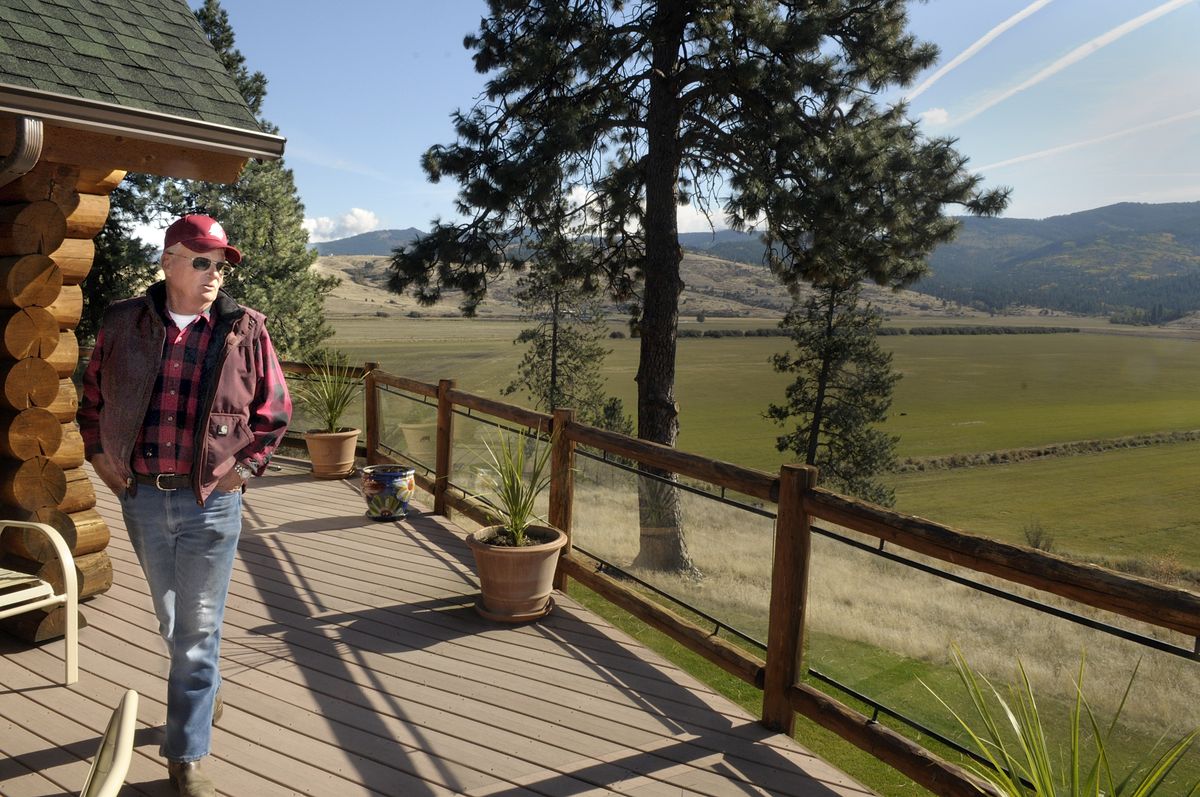County examines lake bed options
Saltese Flats a potential wetlands location

Bud Morrison’s family has worked the former lake bed known as Saltese Flats since 1892.
The farm produces hay and livestock. Its earth is so rich that some of the dirt has been scooped and sold as topsoil over the years.
But this picturesque scene is taking on a new value as residential growth moves into the rural setting along the northwestern flank of Mica Peak in eastern Spokane County.
Saltese Flats has attracted the attention of county officials who are looking for ways to maintain the health of the Spokane River in the face of population growth. They think the existing drainage system could be modified to re-create a wetland to store winter and spring runoff and allow it to soak more slowly into the Spokane Valley/Rathdrum Prairie Aquifer.
That would add volume to the Spokane River, in which summer flows have become an environmental concern. The wetland also would add habitat for wildlife, including migrating waterfowl.
But a potentially controversial feature of the county’s exploration involves using the lake bed as a site for recycling highly treated “class A” wastewater. Newer treatment systems produce effluent clean enough for human contact, and state law allows that water to be discharged above groundwater drinking supplies.
Under one scenario, the county would pipe the wastewater from a sewer plant being developed at an old livestock yard at Freya Street and Boone Avenue.
County officials will discuss a study of the ideas at a meeting tonight.
Morrison said he and his children have talked with county officials about the possibility of rebuilding the wetlands, and they’re open to selling their land to the county.
But the family’s legacy and the future of the land are important to them. Morrison’s grandfather, Peter Morrison, used old-fashioned horsepower to drain the lake and create the farmland at the end of the 19th century.
“If the county’s project isn’t a class project, we won’t participate,” he said during a pickup tour of the property Tuesday.
That means the family wants the wetland to be restored with appropriate vegetation, trails for public use and an interpretive center, he said. The center would offer a chance for the public to learn about the history of farming at Saltese Flats, named after a Coeur d’Alene Indian chief. The land would also need a caretaker, he said.
“I’m not going to be involved in something I can’t be proud of in my last days,” Morrison said.
A consultant for the county has identified a series of options for wetlands on 1,200 acres of the flats. Morrison owns 350 acres, the acquisition of which is listed as the initial, lowest-cost option. A neighboring landowner holds another 170 acres. Morrison said three dozen additional parcels fall under the study area.
A 2004 state inventory of water resources identified Saltese Flats as having potential to enhance the region’s water resources. Currently, excess runoff from Mica Peak flows quickly into Shelley Lake and disperses into the aquifer. Wetlands would slow the runoff and maintain a more constant flow of water into the river during summer, scientists said.
The feasibility study will look at existing data, then more closely examine environmental conditions such as soil, water quantity, water quality, climate and topography.
“I think the wildlife habitat would be tremendous in that area,” said Ben Brattebo, water resources specialist for the county’s Division of Utilities.
But a healthier Spokane River is the real goal as the region spends hundreds of millions of dollars to reduce pollution discharges into the river. Keeping healthy, cool river flows is critical.
In addition, using the land for discharging class A wastewater “takes advantage of the unsaturated soil between the ground surface and the top of the aquifer … as a polishing system to produce water that meets all drinking water and groundwater quality requirements,” according to one study.
For Morrison, the question is more basic: “Am I doing something right for my family?”